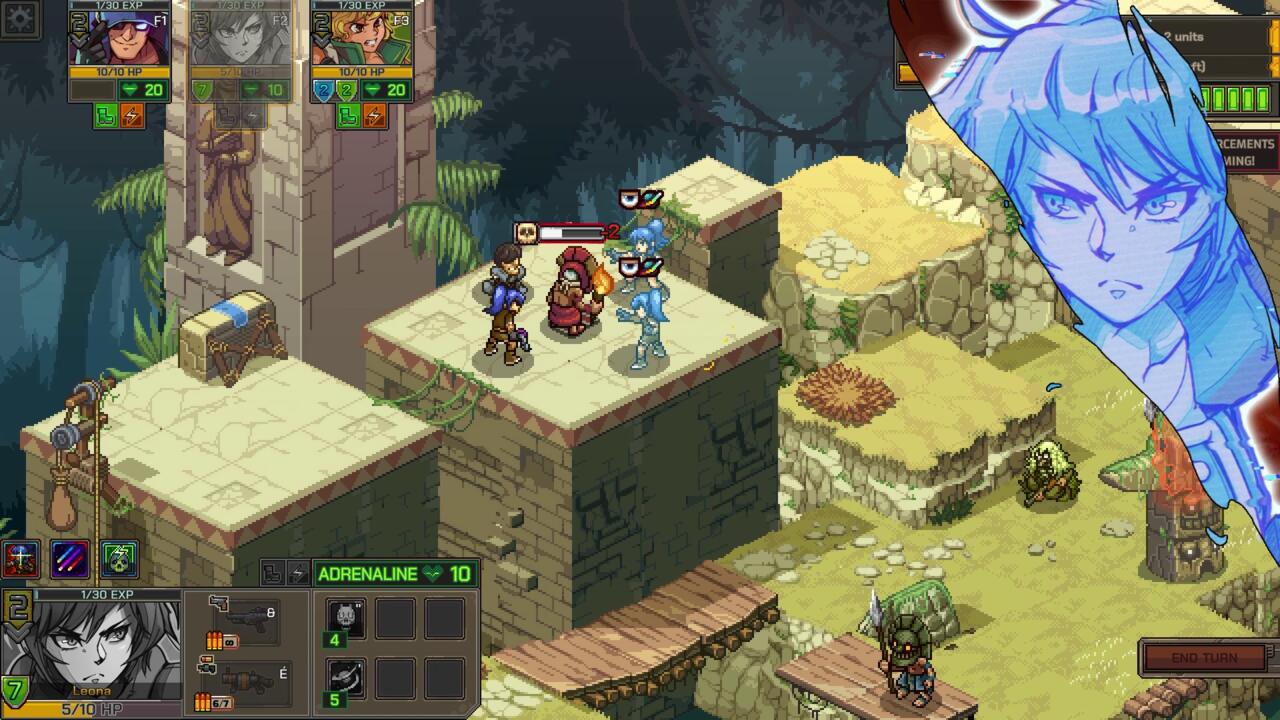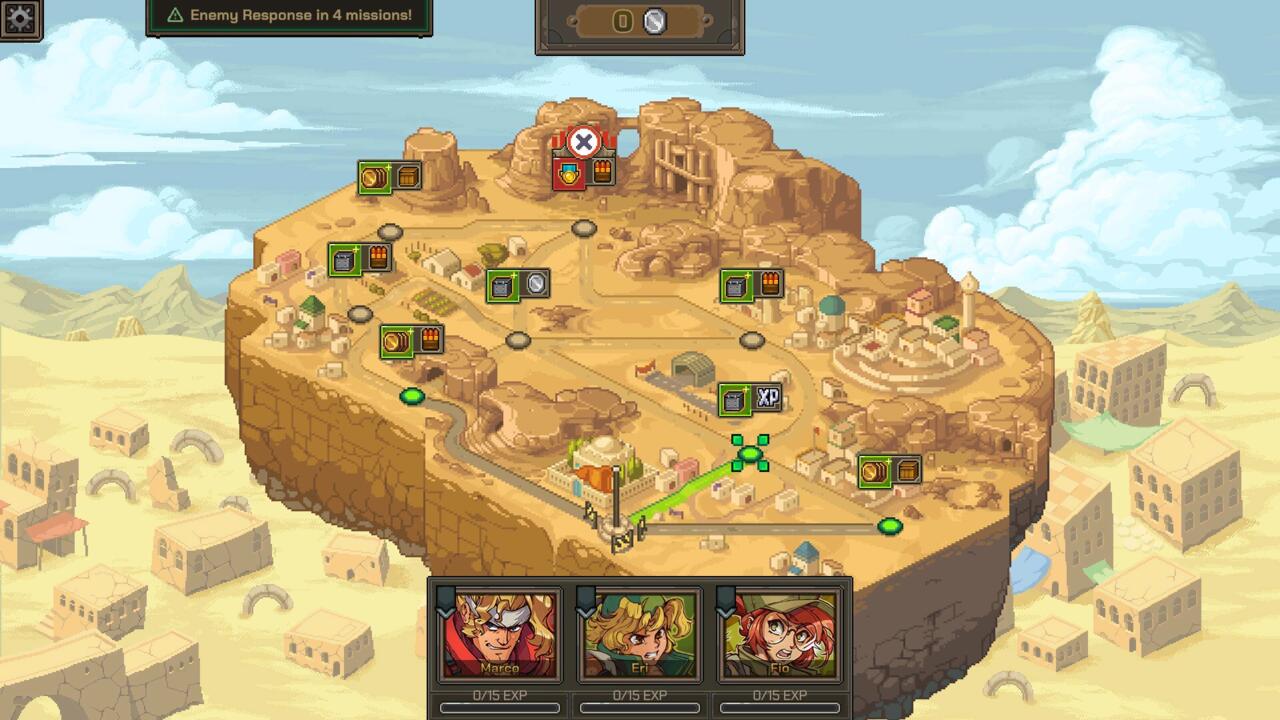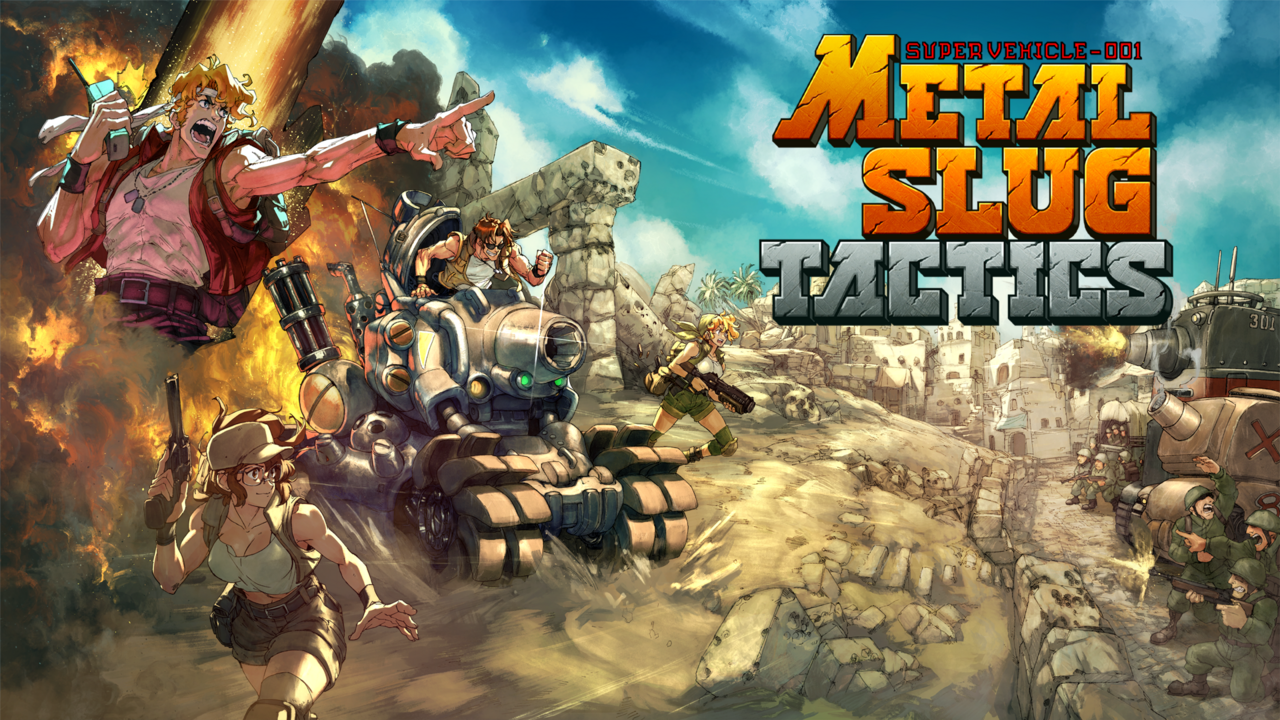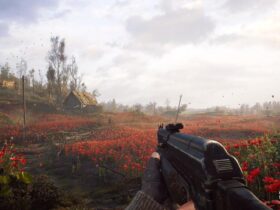There’s always been something endearing about Metal Slug. While its contemporaries like Contra ratcheted up the aliens and body horror, Metal Slug instead leaned hard into comedy, mixing its signature run-and-gun action with comically overbuilt machines, cartoonish villains, and a silly cast of action-hero cliches.
While there have been a few spin-offs over the years, Metal Slug Tactics is the series’ first foray into turn-based strategy, and it comes with a roguelike twist. It’s a mostly successful mission thanks to clever gameplay and maintaining the silly charm the series is known for, though some outdated tropes and too much of your success being outside of your tactical control keep this operation from being a total victory.
Tactics moves the long-running sidescroller onto an isometric grid, and the pixel art-inspired models do a great job capturing the look and feel the series is known for. Everything from the iconic POWs to the titular Metal Slug tanks themselves feel exactly like the original series translated to 3D. The isometric battlegrounds are littered with varied terrain, buildings, foliage, and other scenic elements that feel right at home, and bosses are exactly the kind of over-engineered machinery you would expect.
An individual mission drops your squad of three soldiers onto a small battlefield, as you take turns moving, attacking, and unleashing special abilities. An added wrinkle is the ability to perform sync attacks. If one member of your team hits an enemy, and another teammate has them lined up and in range, they will also execute an attack. A single shot typically isn’t enough to take someone down, so learning how to set these up makes a big difference. It’s also supremely satisfying when you set up a cascade of sync attacks for each character in a round, wiping enemies off the board or doing massive damage to one of the enormous end-of-region bosses.

Your heroes aren’t as disposable as the soldiers and vehicles in Advance Wars, nor is it as disastrous if one falls in battle like classic Fire Emblem. Downed units can be brought back mid-mission using a limited supply of revives. Alternatively, everyone is raised with full health at the end of a level, which makes calculating the risk/reward of trying to finish your objectives while understaffed exciting.
The main cast of characters is a lot of fun. You start with three of nine potential heroes available, including long-time Sluggers Marco and Eri. More characters typically unlock as you complete runs, and it is great how Tactics even brings in characters like Clark and Rolf from sister series Ikari Warriors. Each hero has a unique mix of weapons, abilities, and passive bonuses, and that makes experimenting with different team compositions exciting. Marco’s pistol may not do as much damage as Rolf’s knife, for example, but sometimes hitting distant targets from behind cover is the better play.
Abilities are tied to adrenaline, which primarily builds up based on how many spaces you move in a given turn. This also increases your defense, allowing you to avoid incoming damage. These combine to incentivize playing aggressively rather than slowly scooting forward one tile at a time. At first, the abilities are fairly modest, like Fio moving a single unit a small number of spaces. As you move through a run, however, you frequently gain access to additional abilities as post-level rewards. Taking a few extra steps in a turn becomes much more enticing when you get to call in a powerful, area-clearing air strike at the end of it.
Every level has one primary and one secondary objective. You must complete the former to advance, while the latter, often consisting of challenges like winning in a certain number of turns or avoiding taking damage, bestows an additional reward. If you fail to complete the main task or your entire team is wiped out, your run ends in failure, and you are sent back to base camp to regroup and start again. It’s a tried-and-true formula that generally works well here, although not all of the missions are created equally. Taking out four specific targets within a limited number of turns is fun. Escorting a slow-moving NPC to an exit on the other side of the battlefield, however, is not.
When you visit a region, you are taken to a Mario World-style overworld map connecting levels with paths. You can see which rewards are available at each, though only three of the levels will be immediately accessible. If you have your eyes on a specific prize, such as the Strategic Assets that let you call in ultra-powerful single-use consumables like Metal Slugs, you may need to form a deliberate path, which encourages an engaging bit of thoughtfulness before you dive into the action.

Completing three levels summons the region’s boss, and these fights are by far the most interesting and intense challenges in Tactics. Each combines a massive health pool with unique mechanics and endless waves of cannon fodder to keep the pressure on. Nothing in standard missions quite prepares you to duck for cover to avoid level-wide blasts from a giant robot snake, or to jump from barge to barge as you battle a massive warship. They strike just the right tone of tough but exciting and are great palette cleanser between standard missions.
Missions are challenging enough that clearing every level for the first time feels like an achievement. Similar to other roguelikes, the first full clear (which took me around 10 hours), isn’t the end. Rather, it starts a new phase that focuses more on what you do in an individual run, nicely layering in an additional element of strategy as you master the basics, with additional optional bosses mixed in.
It would be nice if the regions themselves were more varied. Technically, there are four areas, though two are deserts. Each has unique enemies and quirks that distinguish them, like sewers in the Urban area that let you quickly get around, but given that you will be looping through the levels many times, it does start to get a bit stale after a few cycles.
Each area mixes in a unique assortment of enemies with different attacks and behaviors, which does a good job making each feel distinct. However, it seems well past time to retire some of the recurring racial tropes. It’s really not necessary to put an enemy in a turban and have them swing a saber if you are in a desert, or give out spears and masks, and call the people you fight in the jungle “Natives,” even if they did show up in prior Metal Slug entries.
There’s a lot of randomization in each run, enough that it often feels like the odds of success are determined more by luck than any tactical decisions. You get to select which region to make your incursion into but from there the levels, objectives, and rewards reshuffle on every attempt. If luck is on your side, you will have powerful upgrades and abilities readily available in easy levels. If fate is against you, however, tasks can feel impossible. It’s frustrating when a promising run ends early because you need to take out a heavily armored truck before it escapes, and you don’t have the firepower to pull it off. It feels particularly terrible to enter a boss fight knowing, based on the equipment you have, that you are almost certainly doomed.


This would be less of an issue if the incremental upgrades you could earn were more meaningful. Metal Slug Tactics focuses on earning cash to add more loadouts and abilities. The loadouts determine your starting weapons and abilities, adding more but, not necessarily better, options. Buying abilities directly adds them to the potential post-level upgrade pool, which means taking advantage of those once again comes down largely to luck, and there are only a few abilities to add per character, so after a few rounds, it is hard to feel like anything you do makes a difference. That’s a tough pill to swallow when other roguelikes such as Hades make every run, successful or not, count by giving you progress towards persistent weapon upgrades.
Metal Slug Tactics does an excellent job of capturing the look and feel of Metal Slug and reimagining it as a turn-based strategy roguelite. The way its strategic elements combine adrenaline-fueled abilities and sync attacks makes for exciting combat that feels smart. It’s too bad that a successful run is so reliant on luck, whether it’s a favorable mix of missions or the right rewards and upgrades dropping. That, and the uncomfortably outdated enemy designs, are unforced errors that limit the advance of this otherwise capable army.











Leave a Reply